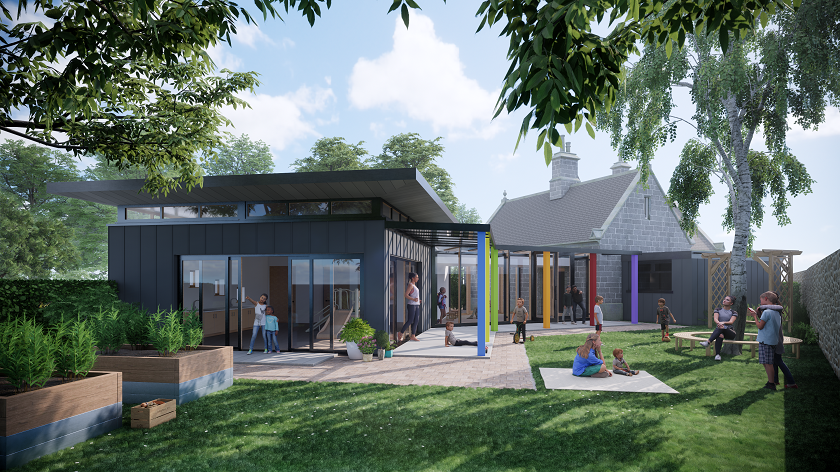Halliday Fraser Munro building blocks of a brighter future for Scotland’s children
Architecture and planning practice Halliday Fraser Munro has developed outdoor nurseries that are the first of their kind in the country as part of its desire to help create progressive early learning provisions to meet new demand.

An outdoor nursery in Duthie Park, Aberdeen
Delivering on the increasingly popular concept of learning through open play, Halliday Fraser Munro has completed a number of innovative new-build nurseries and reconfigurations of existing facilities to reflect the latest educational thinking.
In line with the Scottish Government’s commitment to increase funding for early learning and childcare (ELC) from 600 to 1,140 free hours per year, Halliday Fraser Munro recognises the need to develop new spaces for youngsters across Scotland.
Halliday Fraser Munro is working with Aberdeen City Council which has embraced the opportunities offered by learning through open play. The practice has developed an outdoor nursery in Duthie Park in Aberdeen which it describes as particularly bold in its adoption of progressive principles. Duthie Park and another Halliday Fraser Munro project in Hazlehead Park are the first nurseries of this kind in Scotland. The children attending the nurseries spend all their time outdoors, exploring in nature with landscaped learning areas.
David Halliday, managing director of Halliday Fraser Munro, said: “Features such as riverbeds are more interesting places to learn about things like the movement of water than a sink or bowl. The focus is very much on natural play and features such as slopes, logs and mud pits have proven more involving than artificial plastic and man-made play structures.”
Similar progressive childcare learning environments have been implemented in Japan and Scandinavia where there is a terrific amount of knowledge about how to deliver the most stimulating and involving environments for learning and play.
Scandinavian research has revealed that using natural materials such as exposed wood in internal environments has been shown to reduce stress while outdoor barefoot learning allows children to get direct tactile experience of nature and overcome any fear of the natural world that can arise from being overly “protected” from it.
Removing barriers also plays a key part in the design of ELC spaces, allowing children to move freely between learning spaces and offering a seamless interface between indoor and outdoor spaces. These design attributes offer freedom to explore naturally and assist in light-touch supervision.
Ground-breaking Japanese kindergarten architect Takaharu Tezuka asserts that a lack of physical boundaries leads to fewer psychological divisions between the children and helps stamp out bullying.
David Halliday added: “It’s a huge privilege to be shaping the future of the next generation. ELC spaces are invariably the first places children spent any significant time outside the home so it’s an environment that will shape their destiny. The new extended provisions also mean that some children will be spending a substantial part of their early lives in these spaces.
“We are determined to deliver the very highest standards of design and building quality to ensure that every community can take real pride in these buildings, knowing that they are giving their children the very best possible start in life.”























